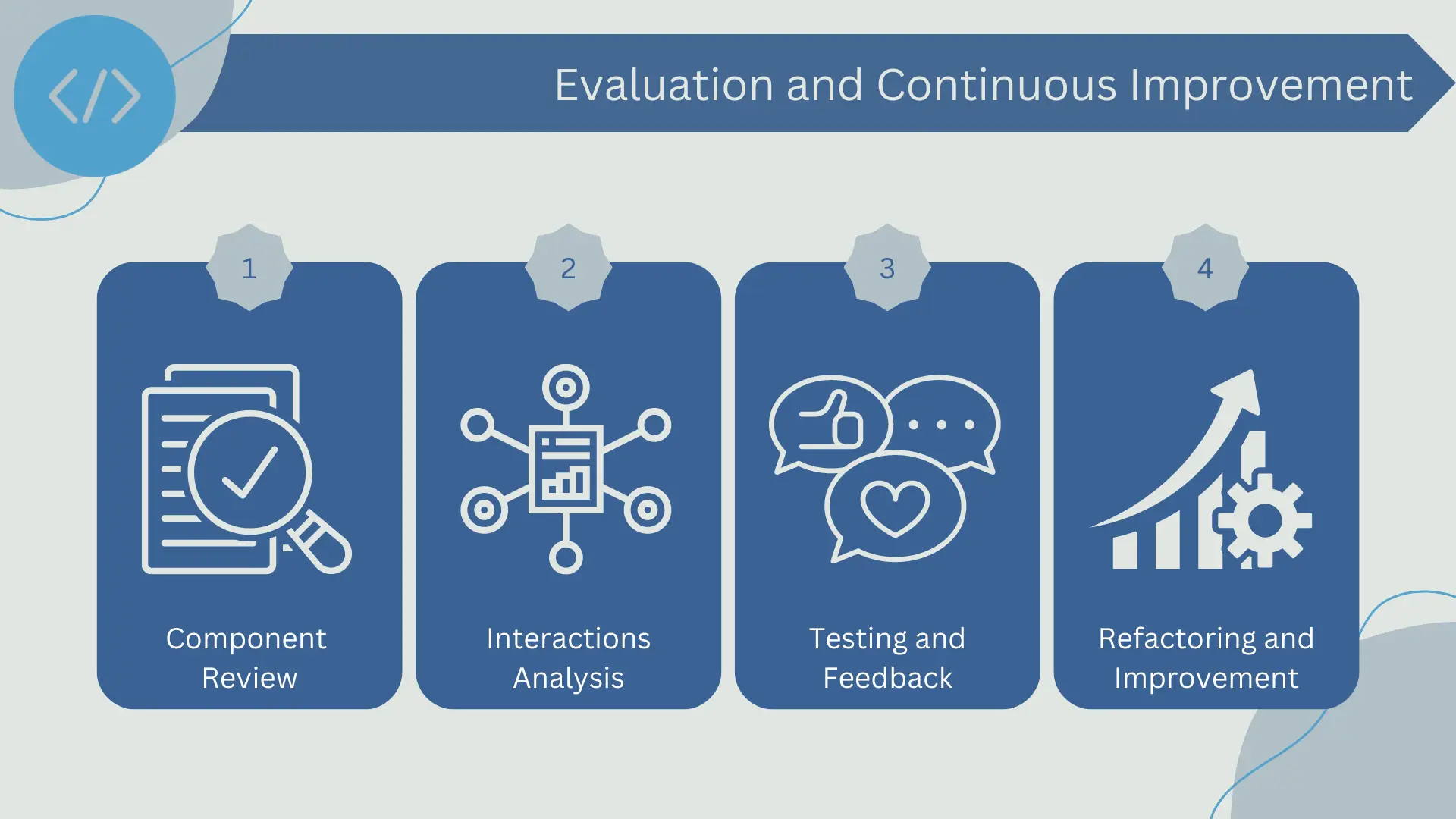Software components are the fundamental building blocks of a software system. They can be considered as modular building blocks, each of which performs a specific function or set of functions within the overall system.
A software component is a unit of composition with an explicitly defined contract and is only accessible through an interface. Components can be modules, objects, subsystems, microservices, etc., depending on the architecture pattern being used. Components play specific roles and responsibilities within the system and work together to ensure the system functions as expected.
Software components encapsulate both data and behavior. This means they keep the details of their implementation hidden from other components, providing a clear and defined interface for interaction. Encapsulation allows components to be developed, tested, updated, and maintained independently.
A well-designed software component is reusable, meaning it can be used in various contexts and different applications without modification. This enables faster and more efficient development by allowing development teams to reuse existing components instead of developing new functionalities from scratch.
Although each software component is designed to function independently, these components do not work in isolation. Instead, they interact with each other through defined interfaces and connectors, forming an interdependent network of components that work together to provide the required system functionalities.
Identifying and defining the correct software components is a crucial part of software architecture design. It involves understanding the system's requirements, defining each component's responsibilities, and designing the interfaces through which the components will interact.
Identificacion of Components
The design of software architecture is a process in which the correct software components are identified and defined. This process is essential to ensure that the system is scalable, maintainable, secure, and capable of meeting the functional and non-functional requirements. The following are some of the most relevant steps in identifying and defining software components:
- Requirements Analysis: The first step in defining software components is to understand the system's requirements. This involves working closely with stakeholders to identify and understand business needs, desired system functionalities, and non-functional requirements such as security, performance, and scalability.
- System Decomposition: Once the requirements are defined, the system is decomposed into smaller software components. Each component is responsible for one or more specific functions within the system. The decomposition can follow various approaches, from functional decomposition (where each component handles a specific functionality) to object-oriented or service-oriented decomposition.
- Interface Definition: Once the components are identified, it is necessary to define the interfaces through which the components will interact with each other. A well-defined interface specifies what services a component provides and how they can be used by other components, allowing components to communicate without knowing the internal implementation details of others.
- Evaluation and Continuous Improvement: Finally, once the architecture is defined, continuous review and evaluation take place. This allows identifying and correcting potential issues and adapting the architecture as requirements and technologies evolve.
It is important to note that the identification and definition of components are not a linear and rigid process but rather an iterative and flexible process that evolves over time as a better understanding of the system and its requirements is acquired.
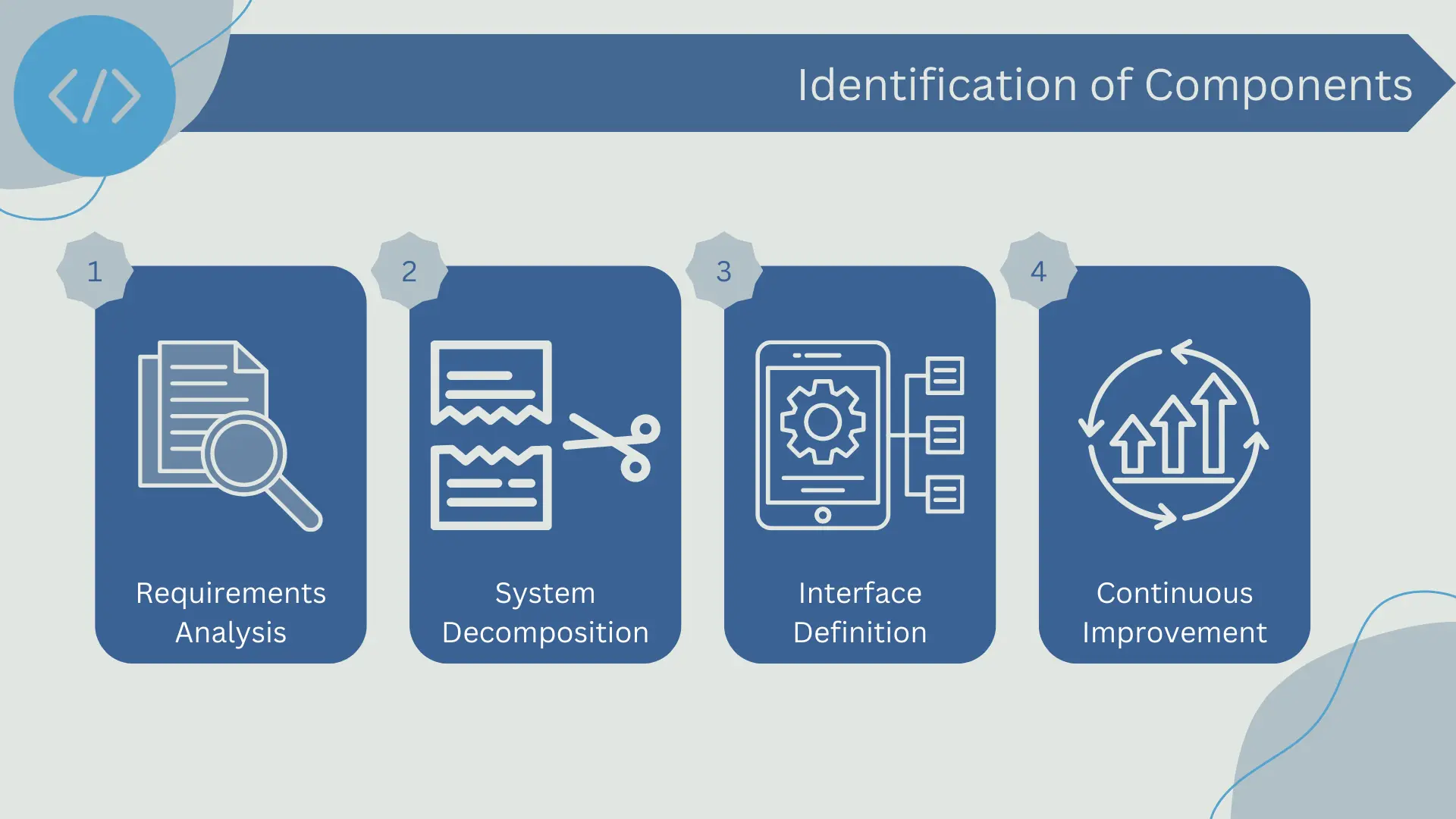
Requirements Analysis
Requirements analysis is a fundamental process for identifying the necessary components in the architecture of a software system. It involves understanding, documenting, and communicating the needs and conditions to be fulfilled for the system under development. This process is crucial because it provides the necessary information to determine which components are necessary and how they should interact with each other.
Requirements analysis may include:
- Requirement Gathering: This is the first step, in which all possible system needs are sought. Various techniques such as interviews, observation, questionnaires, document review, group workshops, etc., can be used. The goal is to collect both explicit and implicit requirements that the system must meet.
- Requirement Classification: Once the requirements are gathered, they need to be classified according to their type (functional, non-functional, domain-specific, user-specific, system-specific, etc.) and priority (high, medium, low). This classification helps to better understand the requirements and decide the order in which they should be implemented.
- Actual Requirements Analysis: In this stage, the requirements are examined to ensure they are clear, complete, coherent, and realistic. Possible interdependencies between requirements are also identified and verified against the system's objectives.
- Documentation of Requirements: The requirements are documented clearly and accurately. This allows all stakeholders to have a common understanding of what the system should do. The documentation of requirements becomes the basis for the design and implementation of the system.
- Requirements Validation: The documented requirements are reviewed by all stakeholders to ensure they meet the system's needs. It is verified that the requirements are correct, complete, realistic, and verifiable.
Requirements analysis provides the foundation for identifying software components. The components are designed and organized to fulfill the identified requirements. Therefore, a solid understanding of the requirements is essential for the successful identification and definition of software components.
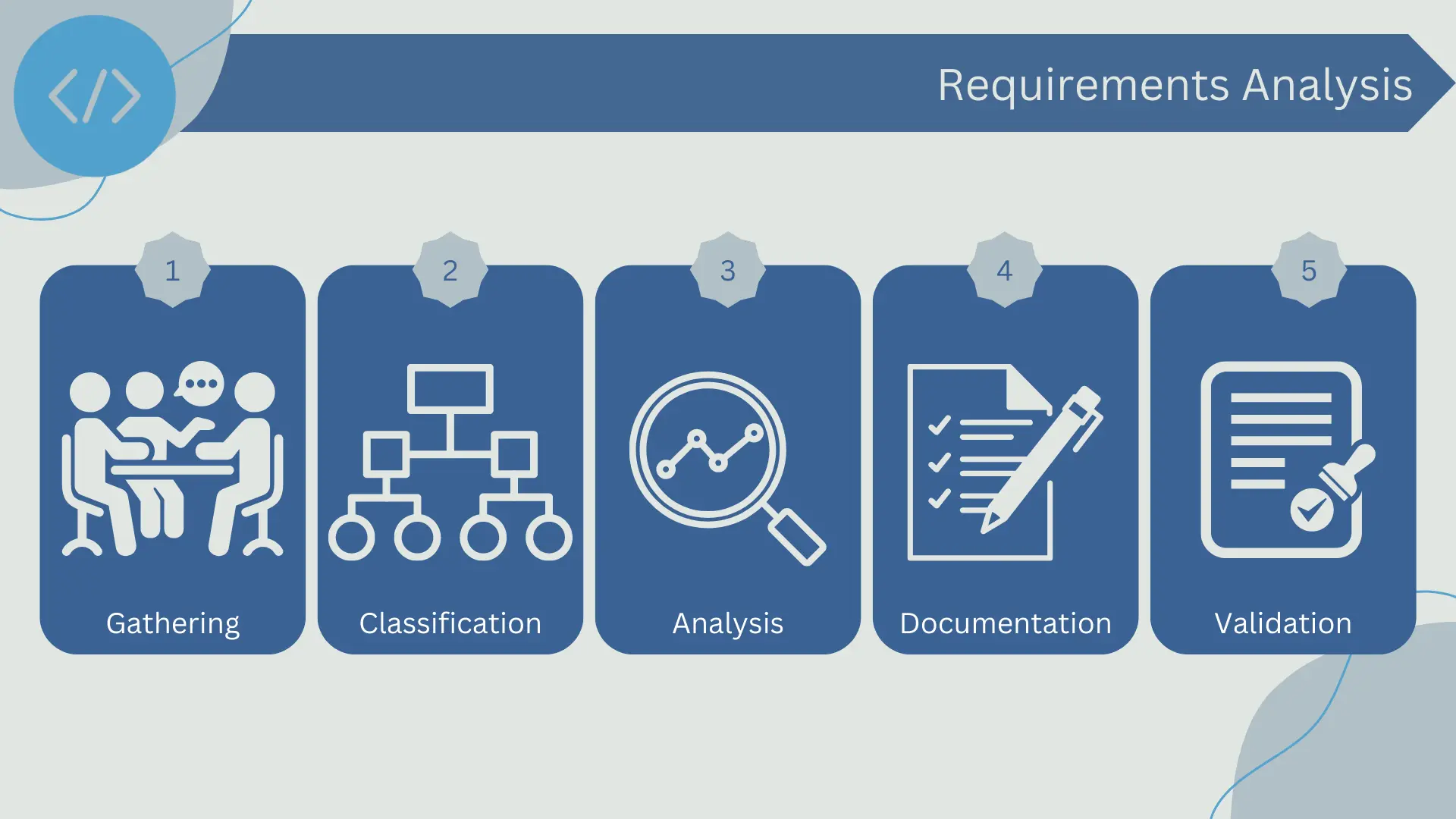
System Decomposition
System decomposition is an essential process in identifying components in software architecture. It is the process of dividing the system into smaller parts or components that are easier to understand, develop, and maintain. The goal of decomposition is to reduce the complexity of the system and make it more manageable.
In this process, components are identified based on the functions they perform in the system. Each component is an autonomous entity responsible for a specific part of the system's functionality. Components can be physical (like a database server) or logical (like a software module handling business logic).
System decomposition involves several steps, which may include:
- Identification of System Functions: The first step in system decomposition is identifying the functions that the system must perform. These functions are identified during the requirements analysis and documented in the system requirements specification.
- Breakdown of Functions into Subfunctions: Each system function is decomposed into smaller and manageable subfunctions. This decomposition is done until each subfunction can be handled by an individual component.
- Assignment of Subfunctions to Components: Each subfunction is assigned to a software component. This assignment is done in such a way that each component has a unique and clear responsibility.
- Identification of Interdependencies: Interdependencies between components are identified. This information is crucial for understanding how components should interact with each other.
The result of system decomposition is a list of clearly defined components and a description of how they interact. This information is used as the basis for the design and implementation of the software system.
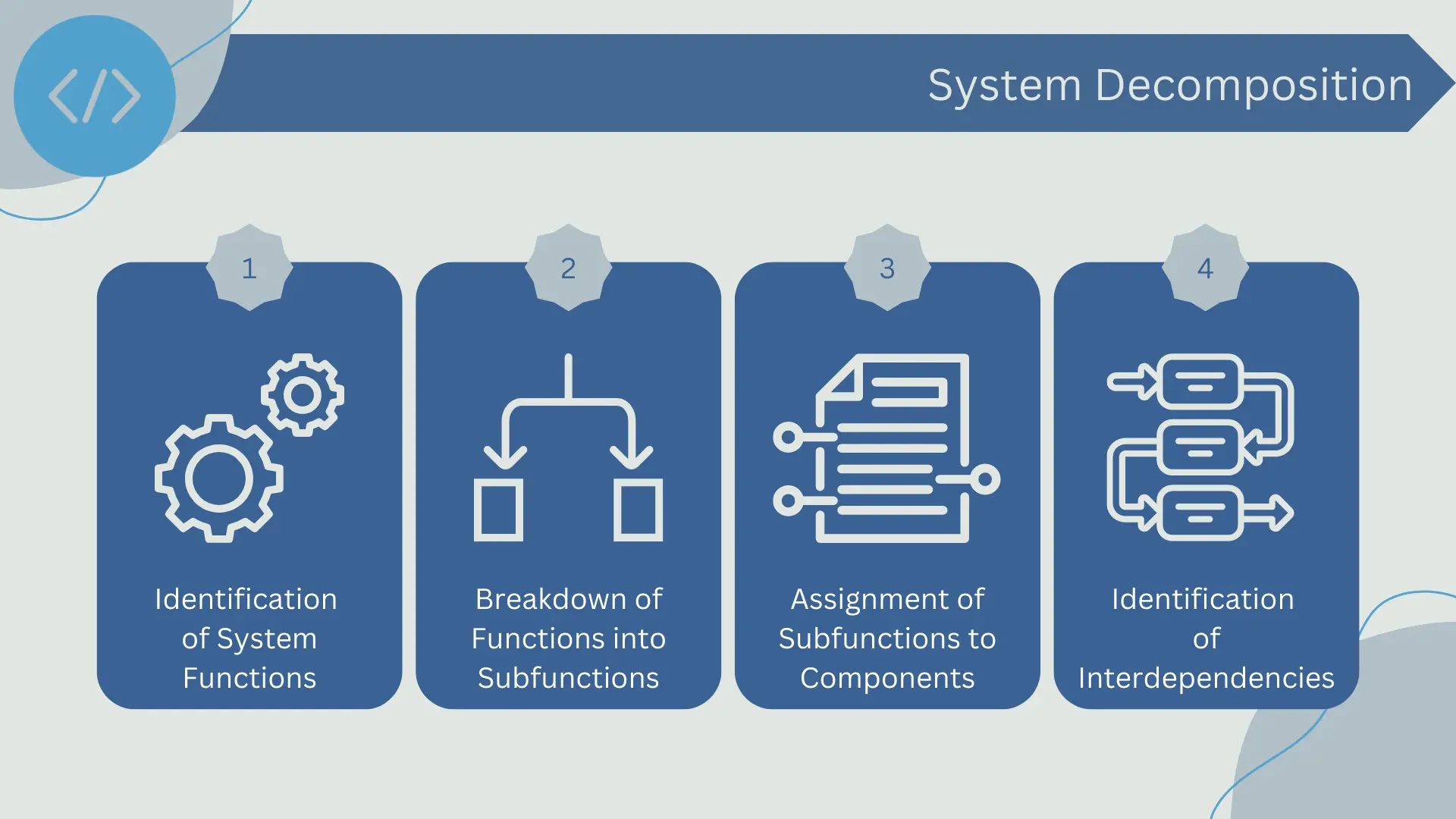
Interface definition
In software architecture, an interface is the description of how a software component interacts with other components. In other words, an interface is a contract that specifies the services a component offers and how these services can be invoked. It can also specify the events a component can emit or the exceptions it can throw.
The definition of interfaces is a fundamental task in component identification, as they act as the means of communication between components. Each component interacts with other components through its interfaces.
The following are typical steps in defining interfaces:
- Identification of Services: The services offered by a component are identified. These services correspond to the operations that the component performs.
- Definition of Methods: Each service is translated into one or more methods in the interface. A method is a function that can be called to request a service.
- Specification of Parameters and Return Types: For each method, the parameters it should receive and the data type it returns are specified. Parameters represent the input data needed for the method, and the return type represents the output data of the method.
- Definition of Events and Exceptions: The events that the component can emit and the exceptions it can throw are defined. An event is a signal indicating that a certain condition has occurred, and an exception is a signal indicating that an error has occurred.
The definition of interfaces is an activity that requires careful consideration since interfaces define how components will interact with each other. A well-defined interface facilitates the integration of components and makes the system more robust and easy to maintain. We will delve into more details about interfaces later on.
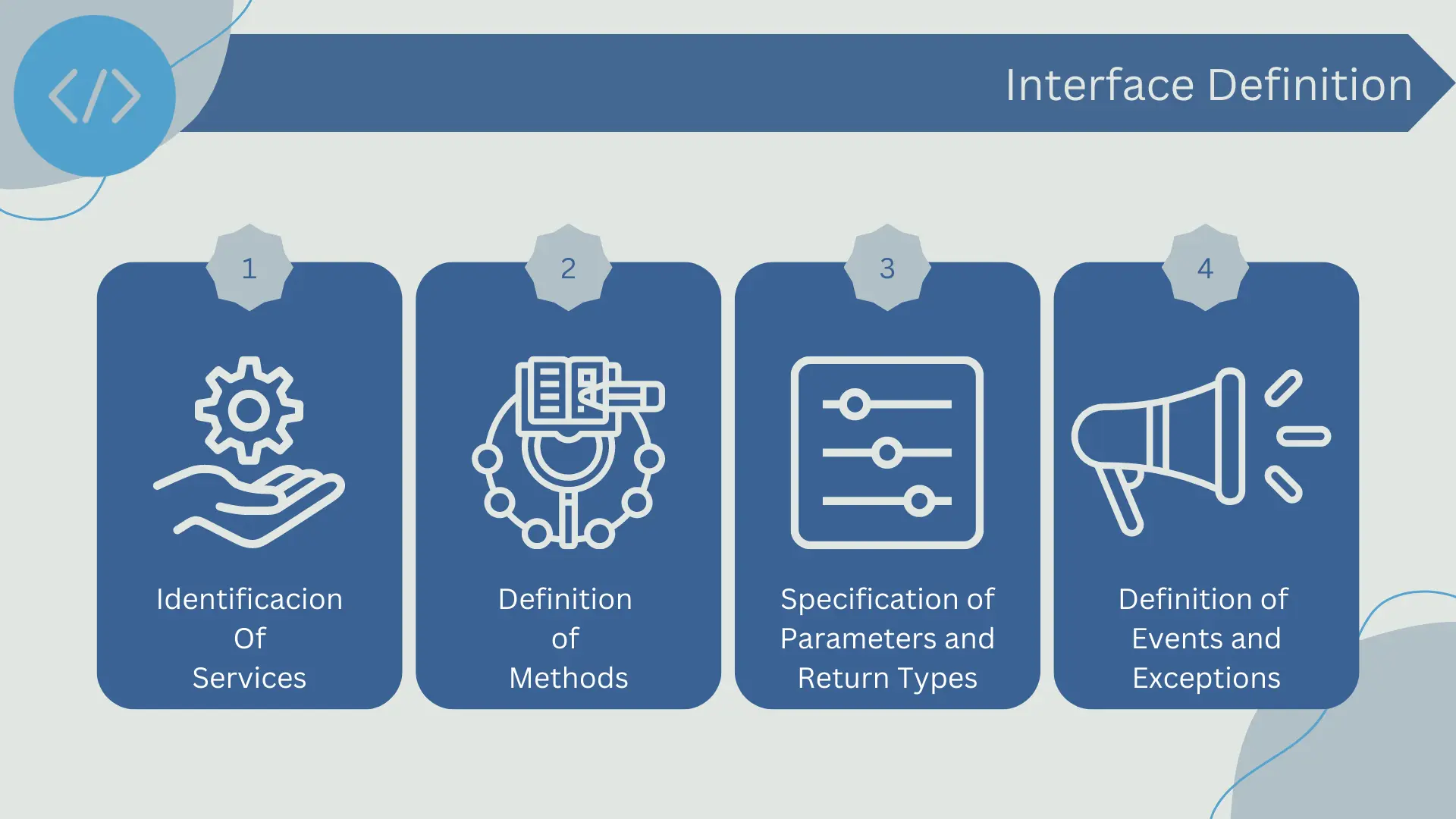
Evaluation and Continuous Improvement
Continuous evaluation and improvement are essential aspects to ensure the effectiveness and efficiency of software components in a system. It involves periodic review and evaluation of the components and their interactions to identify areas for improvement and make necessary modifications.
- Component Review: This involves a detailed inspection of each component and its functioning in the system. Developers should look for optimization opportunities, such as component performance, efficiency of used algorithms, and cleanliness and coherence of the code.
- Interactions Analysis: Evaluation should also consider how components interact with each other. Interaction patterns can reveal areas for improvement in the definition and use of interfaces, as well as in the coupling and cohesion between components.
- Testing and Feedback: Continuous testing and user feedback are vital for continuous improvement. Testing can help identify issues in the functioning of components and interfaces, while user feedback can provide valuable insights into how components are performing in the real world.
- Refactoring and Improvement: Once areas for improvement are identified, components should undergo refactoring and improvement. Refactoring involves restructuring the code without changing its behavior to improve aspects such as readability, structure, and efficiency. Improvement may involve more significant changes to enhance performance, scalability, security, or other aspects of the components.
Continuous evaluation and improvement help ensure that software components remain effective and efficient over time. This practice also contributes to cleaner and more maintainable code, making developers' work easier and improving overall software quality.
